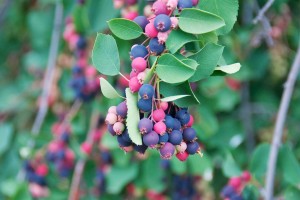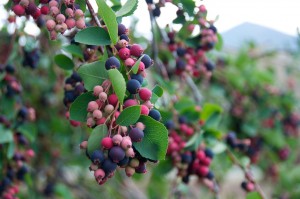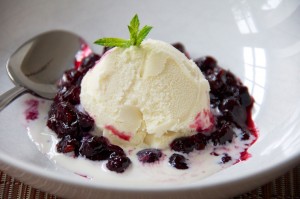A HARD-WON Columbia River spring chinook salmon is so tasty it would be a crime to leave any scraps of meat uneaten. This spicy Indian curry will have you reconsidering what you do with those leftover salmon heads. Crab bait? I think not…
1 medium to large salmon head, gills removed and cut in half
1 tsp black mustard seed (or yellow)
1 tsp cumin seed
1 tsp fenugreek seed
3 tbsp peanut oil
1 tsp red chili powder
1/2 tsp turmeric
2 – 3 tbsp fish curry powder*
6 cloves garlic, minced
1 thumb ginger, peeled and minced
2 sweet onions, thinly sliced
1 tbsp tamarind paste, mixed with 1/2 cup water
2 Asian eggplant, cut into 3-inch pieces
1 zucchini, cut into 3-inch pieces
3 tomatoes, cut into sixths
1 cup coconut cream
1 tbsp brown sugar, or to taste
2 tbsp fish sauce, or to taste
cilantro for garnish
* Make your own fish curry powder, or visit an Indian grocery or spice shop for a prepared blend.
1. Mix chili powder, turmeric, and fish curry powder with a little water to make a thick masala paste.
2. Heat oil in heavy-bottomed pot over medium heat. Add mustard seed, cumin seed, and fenugreek seed and sauté until they begin to crackle and pop, about a minute.
3. Add masala paste, stirring, until fragrant, another minute or so. Add garlic, ginger, and onions, and cook together until onions are soft.
4. Pour in tamarind mixture and bring to boil. Add tomatoes, eggplant, and zucchini. Cook a couple minutes before adding both halves of salmon head. (Add more water if necessary, though note that the vegetables and fish will add to liquid as they cook.) Spoon curry over salmon, reduce heat to medium-low, and cover for 5 minutes.
5. Stir in coconut cream, brown sugar, and fish sauce, careful not to disturb fish. Cook another couple minutes until fish is done yet still tender. At this point, if you’re serving squeamish guests, you can separate the salmon meat from the skin and cartilage. Maybe leave in one eyeball for a lucky diner. Garnish with fresh cilantro.
Like this:
Like Loading...
 IN EASTERN WASHINGTON, wild Saskatoons (Amelanchier alnifolia)—aka western serviceberry, shadbush, and juneberry—grow near the extensive orchards of cherries, apples, and pears that follow the river valleys. It’s interesting to see how this free food is all but ignored.
IN EASTERN WASHINGTON, wild Saskatoons (Amelanchier alnifolia)—aka western serviceberry, shadbush, and juneberry—grow near the extensive orchards of cherries, apples, and pears that follow the river valleys. It’s interesting to see how this free food is all but ignored. A Saskatoon sauce is just the thing this time of year to dress up a scoop of vanilla ice cream. Or you can add some vinegar and herbs to make a savory sauce.
A Saskatoon sauce is just the thing this time of year to dress up a scoop of vanilla ice cream. Or you can add some vinegar and herbs to make a savory sauce. 2 cups Saskatoon berries
2 cups Saskatoon berries








